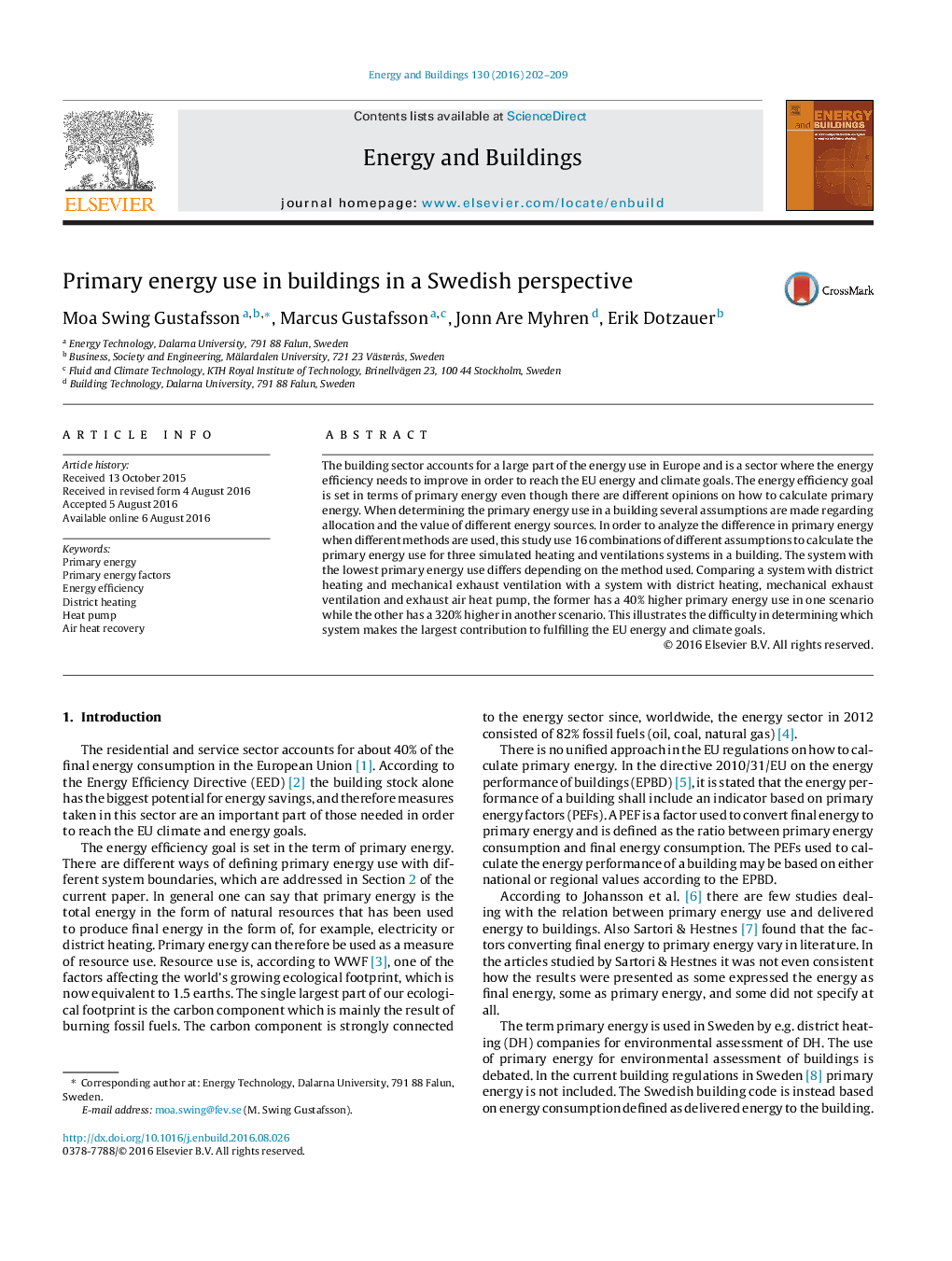| Article ID | Journal | Published Year | Pages | File Type |
|---|---|---|---|---|
| 4919587 | Energy and Buildings | 2016 | 8 Pages |
Abstract
The building sector accounts for a large part of the energy use in Europe and is a sector where the energy efficiency needs to improve in order to reach the EU energy and climate goals. The energy efficiency goal is set in terms of primary energy even though there are different opinions on how to calculate primary energy. When determining the primary energy use in a building several assumptions are made regarding allocation and the value of different energy sources. In order to analyze the difference in primary energy when different methods are used, this study use 16 combinations of different assumptions to calculate the primary energy use for three simulated heating and ventilations systems in a building. The system with the lowest primary energy use differs depending on the method used. Comparing a system with district heating and mechanical exhaust ventilation with a system with district heating, mechanical exhaust ventilation and exhaust air heat pump, the former has a 40% higher primary energy use in one scenario while the other has a 320% higher in another scenario. This illustrates the difficulty in determining which system makes the largest contribution to fulfilling the EU energy and climate goals.
Related Topics
Physical Sciences and Engineering
Energy
Renewable Energy, Sustainability and the Environment
Authors
Moa Swing Gustafsson, Marcus Gustafsson, Jonn Are Myhren, Erik Dotzauer,
